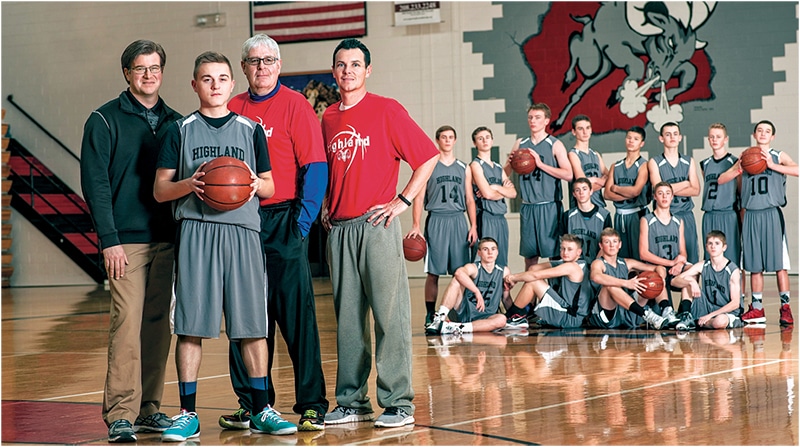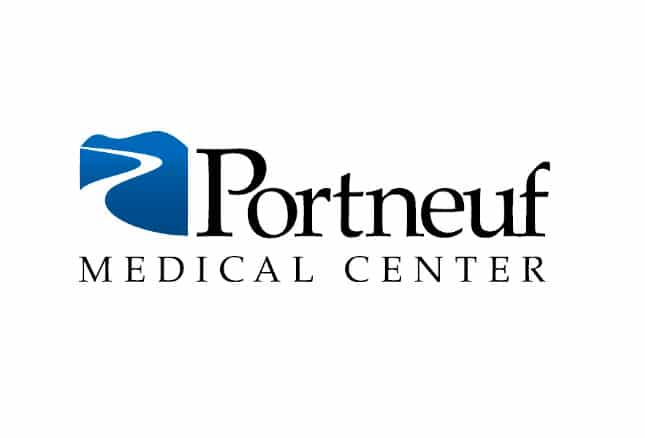Thanks to the quick response of Portneuf Medical Center’s trauma program, 15-year-old Dylan Anderson is back where he belongs—on the basketball court. On October 17, 2014, Dylan, a high school student from Pocatello, Idaho, was on his way out of Holt Arena after watching a football game when he fell approximately eight feet onto a concrete floor below. Dylan landed on the side of his head, losing consciousness briefly and experiencing a small seizure. He was rushed to PMC by the paramedics on site. After a computed tomography (CT) scan, doctors discovered that Dylan had suffered an epidural hematoma—his skull had fractured, and a blood vessel had been severed.
Thanks to the quick response of Portneuf Medical Center’s trauma program, 15-year-old Dylan Anderson is back where he belongs—on the basketball court. On October 17, 2014, Dylan, a high school student from Pocatello, Idaho, was on his way out of Holt Arena after watching a football game when he fell approximately eight feet onto a concrete floor below. Dylan landed on the side of his head, losing consciousness briefly and experiencing a small seizure. He was rushed to PMC by the paramedics on site. After a computed tomography (CT) scan, doctors discovered that Dylan had suffered an epidural hematoma—his skull had fractured, and a blood vessel had been severed.

“When I arrived, Dylan was in a coma, and it was critical for us to get him into the operating room as soon as possible,” says Jonathan Morgan, D.O., neurosurgeon with Portneuf Medical Center. “The whole team was there and prepared, and I was able to perform the operation and evacuate the blood clot very quickly.” “Time was of the essence, so we didn’t speak much with Dr. Morgan prior to the surgery, but he took the time to answer all of our questions and address our concerns,” says Desia Anderson, Dylan’s mother. “I cannot explain the anxiety we were feeling, but Dr. Morgan and the ED staff helped us through it.”
Home Court Advantage
Without PMC’s trauma program, the only verified Level II Trauma Center in the area, patients like Dylan would have to be flown to the next-closest trauma center in Utah. In Dylan’s case, his recovery or survival might not have been assured. “It’s huge for the community that we can provide high-level trauma care locally,” says Dr. Morgan. “Everyone’s focus at PMC is on providing the community with top-quality care, and in Dylan’s case, we were all able to work together and accomplish that.”
Off the Bench
Not every recovery from a traumatic brain injury progresses as well as Dylan’s. He remained focused and positive throughout his recovery, setting small goals for himself he was determined to achieve. “The recovery process was long, but the support I received got me through the bad times,” Dylan says. “As soon as I could, I was putting a few shots up at the gym. Two months to the day after my accident, I played in a game.” “Our son’s life was saved that night. We want to thank every person who helped Dylan—the paramedics that safely got him to Portneuf Medical Center, the ED team that quickly diagnosed the injury, Katie Fritz, M.D., and her surgical team for their quick response and assistance, the ICU personnel for their kindness, and especially Jonathan Morgan, M.D., for repairing the injury. There aren’t enough words to express our gratitude.” —Desia and Wade Anderson, parents of trauma patient Dylan

